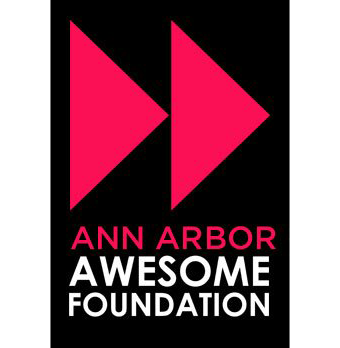Tuesday / November 27
Written by Matt
Our session today was spent working through Act I, scene i. It’s a monster of a scene--definitely the most complicated in the play in terms of the sheer number of people moving about (or standing!) onstage, and the one that bears the greatest weight of storytelling. Every major character except for the Fool and Edgar appears in the scene, and all of the important relationships in the play are established. Unlike most of the tragedies, there is almost no “runway” leading up to the main event. Gloucester and Kent speak briefly, then Lear enters and divides his kingdom--no indirection, no misdirection, no long interactions between minor characters to give political and philosophical context (I’m looking at you, Hamlet!), just thirty seconds of dialogue and then the beginning of the play’s chaos. It’s a lot to manage, and it was a tough way to start out.
The first instinct of this ensemble has always been to sweat all the details. Too much. We had barely started when half a dozen of the guys were trying to work out the specifics of staging and body language, while others litigated the exact placement of chairs and tables. As exciting as it is that they care so deeply and have such attention to the little things, it stalled the process quickly. Frannie, helped by our Lear and a few of the guys who are more comfortable thinking about the big picture, eventually righted the conversation by talking about how we want the relationship between Lear and his daughters to look.
“It felt right when I was standing behind [France and Burgundy],” said our Cordelia, “but I knew I couldn’t be seen.” A couple of the other guys suggested that the picture might look best if Lear was offering his daughter to France and Burgundy standing beside her, as if selling her like a product. But our Lear said that he wanted to have a lot of empty space between Cordelia and him on the line “There she stands,” and we all trusted his instinct.
We reset to near the top of the play, and our Cordelia was playing around with the arrangement of the sisters, moving himself closer to Lear and away from the audience. There were moments that really worked (Lear’s “Out of my sight” to Kent was devastating), but as we ran it, the movement became muddled, and some of the guys grew restless, especially those who need to sit or stand quietly for long periods of time. We limped to the end, and it helped that Goneril and Regan were brilliant in the scene’s final moments: snakelike, speaking in sibilant voices that were creepy without being humorous.
As we began reflecting on that last run-through, Frannie again urged the guys not to indulge in problem-solving, to keep their comments to observations (what worked, what didn’t) and instincts (I wanted to go here, I wanted to move away from him). Our Cordelia really liked the new arrangement of the sisters, except for the fact that his asides needed to be delivered from center stage and felt a little false and confusing because of that. Another member asked whether we could simply freeze during the asides to make it visually clear that they are spoken to the audience. Frannie said we could try it, but noted that every single aside in the play would need to be delivered in that way, and we would need to get really good at freezing consistently if we wanted to pull that off.
While a few people mulled over how to clarify the asides, Lear said that he kept wanting to move during the scene, but felt “stuck.” Our Kent leapt up instantly. “But you know the strength of Lear’s character. Anything you do, we all have to react to you.” He demonstrated, asking others onstage to react to his movements as if he were Lear. “You can just move up to someone,” he continued. “Just like in real life. Whatever they tell you you can’t do, you can do.” Our Lear, watching this, was a little skeptical. “I feel like he’s not actually that powerful,” he said. A few guys jumped in to argue that point, but we pivoted to a new member, who had had his hand up.
“I feel like we need more choreographed movement,” he said. This led instantly to a debate about the value of predefined movement as opposed to moving totally based on instinct. Again, Frannie had to intercede here to say that theatrical “blocking” actually strikes a middle ground between dance choreography, in which every motion is determined, and improv, in which no movement is figured out beforehand. “I think you’ll find that having some guidelines will free your instincts up,” she said. And in general, she added, you move only when you “need” to.
She and Maria demonstrated with a short section of text, moving only on the words that impelled movement. This seemed to clarify the concept for a bunch of the guys. “When you were trying to get each other to see each other’s points, you moved closer,” observed our Cordelia. “As you moved away... you got more aggressive,” added our Regan.
Before we reset to try again, our Edgar, who had been working out a different concept for the staging of the scene, explained his idea. He positioned people as they would be for France and Burgundy’s entrance, when the stage is at its busiest, and walked each group of ensemble members through his ideas for how their characters move. Essentially, his concept was a refinement of the “V” shape we had often found ourselves in during early scene work, but with the characters’ positions better thought out, and Lear more visually in command.
The “V” shape (with Lear at the upstage tip) gave one of our members a chance to demonstrate how the king could visually command attention within the playing space. He walked from person to person, calling them into the center of the stage and sending them away or forcing them with his gestures to move from one side to the other. “You’re the king,” he said. “Just be the king. You want them to move, you don’t have to move; you move them with a gesture.” Another guy added, “You get to move down on the same level as everybody--if you want to.” The first man agreed vigorously, and added that Lear can take as much time speaking as he cares to. “Remember that the words are yours to use. You can stop and start and think about it…. You’re the center of the world.”
At this point, we had been talking for 45 minutes without actually trying any of it out, and people were starting to feel overwhelmed. “This is really complicated,” said our Lear, standing center stage and looking a little lost. We began to set up, and our Edgar fussed with the placement of the characters. After a moment, Frannie reminded everyone that we are not in our actual playing space, and we will work out the details later. “Give room for instincts!” she reminded us, and we were off on round 3!
Or… almost. The guys broke off to center themselves and get into character (Lear walked across the stage and Kent shouted, “My Lord! What are you doing?!”). Sips of water, last minute adjustments of entrances, and then, at last, we began at the beginning.
Lear was totally in command. Regan and Goneril used imaginary fans to hide their faces and express themselves brilliantly. And, with the new setup, Cordelia’s asides were crystal-clear. We paused for a moment as France and Burgundy were to enter. Everything was going well, we agreed, except that Lear kept inching back upstage and away from people as he talked to them instead of standing his ground. “Dude,” said Frannie, “this is all on you! I’ll call you out!”
As we began to run the final parts of the scene, Lear kept backing up again. Frannie stopped him to bring him back. “Do I stand here between them, then?” he asked, incredulous. “Are you going to cede ground to [Cordelia]?” Frannie shot back. After a moment of thinking about it, Lear admitted, “No.”
Then, as Lear uttered his final curse on his youngest daughter, he stepped up to her, inches from our Cordelia’s face. “Better thou hadst never been born than not to have pleased me better,” he said contemptuously. A few audible reactions from the audience, including a “whoop!” paused the scene. It was so cold. “Spit in his face!” said Frannie. “What?!” Our Lear was totally wrongfooted by that. “I mean, don’t actually spit in his face, but you’re basically spitting in his face.” Under his breath, our Kent muttered, “Now I know why people are all into Shakespeare. Spit in his face!”
There was so much energy in the scene by now that the guys were finding natural movements all over the place. As we finally wound the scene down, we had a few moments for a final reflection. “That worked really, really, really well,” said our Regan. “Thanks, [our Edgar]!” exclaimed our France, and we all applauded the man who had worked out our staging.
Our Lear still felt a little swamped by the overload of feedback he had received between the second and third runs. “Too much stimuli,” he said. “I was thinking too much of everything all the time.”
We agreed to move on next time, but it felt good to end on such a solid run of this tough scene.
Friday / November 30
Written by Frannie
The guys wasted no time getting down to business today! Our Edmund has been making himself index cards that have only his lines and their cues, and he’s realized that nearly all of his cues are questions. He’s not sure yet what this means about his character, but he’s even more excited than he was before, and it’s tough to believe that that was even possible!
Lear asked if he could check in about the play. “I didn’t feel comfortable with the way y’all were portraying Lear as so strong,” he said, referring to Tuesday’s rehearsal of Act I, scene i. “I went back and read it seven or eight times, and—it’s just not there... It’s not like he’s no Caesar… Macbeth was at the top of his power. Lear is not. It ain’t like he’s at the top of his power anymore… He divides his kingdom. What kind of king divides his kingdom?... For me, I keep reading it, and it’s not about Lear’s power.”
The man who’d been the most outspoken about Lear’s “power” tried to clarify what he’d meant; that even without actual power, Lear has majesty. “He’s got a lot of idiosyncrasies that make him weak in effect, but he’s powerful in principle… I’m not telling you he’s making good decisions. Power is power. You get to say how that power shows.”
These two guys really like each other but sometimes have a tough time communicating (even when they agree), and I broke in to say that they were both right. “That’s his struggle through the whole play,” I said, “‘How do I navigate this new situation?’” I reassured our Lear that this is one of the most challenging roles in any play, and that it would behoove us to break down the scene, beat by beat, to find the detail he needs. I thanked him, too, for bringing all of this up. Sometimes folks can feel pressured by the ensemble (and facilitators!) to interpret a role one way, when they truly see it another. If we don’t notice, and they don’t say anything, resentment can build that detracts from the process in a big way. I asked everyone (please!) to follow this example and let us know if we’re being jerks!
Our Lear really, really wanted us to understand where he was coming from. He continued to explain: “Right off the bat, Lear shows irrationality because he’s trying to look out for his baby girl. Why else divide up the kingdom? He wants the best for his baby girl—that’s why he’s got France and Burgundy in there—and when she rejects him, it hurts. He thinks he did all this for her, and now she don’t want it? That’s hard. When it all falls apart, he can’t handle it.”
Another man suggested that the “power” issue isn’t truly about power: it’s about empathy. He hearkened back to a particularly effective scene he’d performed with another of the guys: “The reason we did that scene so well was not because we planned anything, but because we had empathy for each other,” he said. “If you have the authority, that’s where the empathy comes in—how is everybody looking at that individual?... They’re waiting to see what you do to see how they should play off of that—to see how they should feel… Do what you feel, and then other people will read it according to whatever they’re looking to you for.”
Our Gloucester shared that he has been doing some very cool, self-directed character work, including imagining himself hanging out with the actual person he’s portraying. “I sat down with Gloucester yesterday—actually, he sat ME down,” he said. “And I realized that whenever I sit down and look at him, he’s in all medieval-style, like 14th century… and that limits me in the way I portray him…. I can’t see him that way. If I break him out of that little prison I put him in… I can express him a lot better. He’s the kind of guy who shops at Tom Ford—bougie!” We all laughed, and so did he. But then he continued, “That attitude is what got me here in the first place. I was prideful, overconfident at times… very, very, very stubborn. I realized that Gloucester really was the old self of me.” We took this in, some of us grinning, some shaking our heads. He beamed, looking at each of us in turn as he said, “He found me!... That’s my old self. That’s how I got here in the first place. He found me! And that’s an epiphany for me, and I know how to play this guy now… I feel like Gloucester without the eyes—but I have eyes now.”
The guys have asked for more exercises to help them get out of their heads and feel more natural when performing, so I came prepared with a whole bunch of Michael Chekhov stuff that I thought they’d enjoy! Ours is not an acting class, but a smattering of exercises and techniques can really enhance our process, and I’ve found that Michael Chekhov’s technique is hugely beneficial even when we move through it faster and modify it more than we would in a class on the outside. In fact, as soon as I mentioned that that’s what I had up my sleeve, one of the guys asked me a detailed question about radiating (part of the technique). Another man, listening to this, said, “Where are you getting this language?” The first man sheepishly responded, “Uh—I got the book.” For real. He’s reading To the Actor right now, concurrent with a book specifically about performing Shakespeare—the second this guy has read.
Anyway: Michael Chekhov. I won’t go into a ton of detail here (because this blog is long enough already!), but the core of this technique is to use one’s imagination to change one’s physicality, and for that physicality to inform the character’s psychology: thus, we call it “psychophysical.” It goes along with the idea of emotion/memory being stored in the body: I fell in love; I took a leap of faith; I pushed her to the breaking point, etc. So it’s creativity and movement, but no thinking! Perfect for overthinkers and folks who’ve been through a lot of trauma.
We’ve already done a few simple exercises that they like, and today I asked if I could lead them through imaginary centers. The idea here is that the quality of your movement changes depending on where you imagine your energy to be centered. If your entire body is one unit centered in your head, for example, you’ll move differently than if centered in your chest, or in your left hip, or your nose, or even somewhere outside of your physical body. (I know, it’s weird if you haven’t done it yourself, but bear with me!) We focused on the three main centers and their accompanying images:
THINKING: centered in the head / the image is a stick
WILLING: centered in the pelvis / the image is a ball
FEELING: centered in the chest / the image is a veil
I will again resist the temptation to go into lots of detail; I’ll add to the above description only that this was a very physical exercise and that, while we didn’t spend the length of time on it that would have been ideal, we didn’t rush. And the guys were impressively focused on their work: even when people who weren’t in the ensemble came in and out of the gym (some literally stopping to stare), they didn’t flinch or back off. A couple of ensemble members who did lose focus a bit did so for their own reasons, not because they were distracted, and they stayed within the exercise, absorbing what the others were doing.
Afterward, we sat together in a circle on the floor. At first, no one quite knew what to say; not surprising, as this is an exercise that can be surprisingly emotional for some people, and outright unnerving for others. I gently asked for any kind of reflection from anyone: what did you notice about your experience?
“I was more comfortable in my feeling center, and second my thought center,” said one guy. “I found when I was operating in my thought center, I had a totally human experience of thinking, ‘Dude, you’re rolling around on the ground.’” A few of the others said they’d thought the same thing. “But the feeling center felt better for you?” I asked him. “The veil thing was very emotional,” he replied. “I pictured my mind like a war-riddled flag: rugged and weary.”
Another man said that each center “represented a different way that I felt my movement… The biggest part was getting over the feeling of self-consciousness. Once I got over that feeling, I really enjoyed it. Each one had a different feel to it, and I just thought, ‘Okay, there’s something to this.’” (I’m gonna add here that I honestly didn’t know if this guy was even going to participate; the fact that he enjoyed it was thrilling.) Even a man who arrived late described what happened when he dove in: “I felt my inner peace go very solid. I didn’t feel like I was here. I felt like I was in a different place. I felt like I was someone else. I didn’t feel like me. I didn’t even feel like a human.”
“I was able to access the subconscious of my own personality,” said another man. He said that he’d curled up in a ball when in his feeling center, which reminded him of when he was very shy as a kid. “As I became more comfortable, I opened up,” he said, describing how he’d spread his veil. “I was more confident in the will area… in a way that was very surprising to me.” His “old self” wouldn’t have been.
“I had a really hard time with it,” said one of the guys, explaining that the images conflicted with his own perceptions of what the objects at those centers would be. He struggled to stay focused on himself, instead observing others without meaning to and trying to do something different. “So you were performing?” I asked. “Yeah, I guess I was. My only thought was, ‘Don’t mimic it,’” he said. “It’s tough, I know,” I reassured him. “It’s hard not to perform—just to be. You’ll get there.”
Another man said he’d kept his eyes closed the entire time—he’d neither needed nor wanted to open them. “I created energy fields around me,” he said, and he’d start moving once he felt that a field was fully formed. He became a very literal stick on a nature trail in his hometown, lying on the floor, and “someone jumped over me, and that was completion for me.” (The man who’d done the jumping grinned a little. I think I was the only one who noticed.) He said that he’d had something like an out-of-body experience as the ball, seeing not only himself, but all of his surroundings, as if from above. The feeling center gave him some trouble because he wasn’t sure exactly what I meant by “veil”; instead, he became “pure rhythm.” He added that, even with his eyes closed, and even though he’d moved around quite a bit, he never feared that he’d collide with anyone. “I could feel everybody,” he said, and then he paused. “That was very intense. I wasn’t a human being—I was just an entity. And your voice was the only thing that could maneuver me besides my mind.”
One of the men said he’d felt like the big stick in Walk Tall, and that put him “in the zone… Everything was just clicking! My focus was just—tunnel, and it stayed like that the whole time.” In his willing center, he said, “I was a dodgeball, and my will was just pushing everything out of the way.”
Another man said he’d thought he’d be really good at this, but instead the technique made him sleepy. When that happened, he kept his focus with the ensemble but drifted to the side of the room so he wouldn’t distract anyone. He acknowledged that part of the issue was that he couldn’t get over the objects’ being inanimate in reality: “It seems like none of those things could move because they’re not alive.” Still, he didn’t think ill of the exercise. “My normal thing would be, ‘You guys are all crazy.’ But so many of you guys had an experience… I’m a bit jealous. I wish I could’ve done something like that.” I quickly said, “You couldn’t today. That doesn’t mean you can’t.”
“You wanna know something crazy?” said one man. “When you introduced things, my energy was already moving in that way.” Another man agreed, saying, “It was so freeing.” He hadn’t wanted to stop. “Even now, I’ve got the Chekhov glow still going.”
One of the guys said he could see the value of the exercise for our play and performances, but another asked, “How are there different sorts of wills?” I love this question for many reasons, though I’ll admit that one is that the simplest way for me to answer is to demonstrate! I chose the line, “Now then, legitimate Edgar, I must have your land,” and asked the group to throw out a type of ball, let me incorporate it into my performance, then give me another type, and so on. They gave me a ping pong ball, a dodgeball, an egg, a football, and a bowling ball. With each image, my approach changed, and I saw a lot of faces lighting up as the final pieces fell into place. “All right,” said the man who’d asked the question, grinning, “I’ve got it now!”
“Good!” I said, “Because I think we’ve arrived at Edmund’s first soliloquy, yes?” The others confirmed that that’s where we’d left off. “That’s what I thought,” I said in mock-villain fashion, as our Edmund smiled, exhaled, put his hands on his head, and looked up at the ceiling (or the heavens?). “You’re up,” I said.
The rest of us headed to the bleachers, as he took his time recentering himself. He gave a strong reading, though I think we could all feel he was holding back. Afterward, he shared, “I liked the images, especially the switch from the feeling center, going from anger to retaliation...” He went on to describe how he’d mapped out the progression in his head. One man said he’d thought “the flow was pretty smooth,” but another said, “The first time you did this, you made me want to be on Edmund’s side. You made me feel guilty for disliking him. But that didn’t happen this time.” Edmund nodded and said, “I guess I’m overthinking it.” The other man pushed back, “How’d you do it before?” Edmund replied, a little uncomfortably, that he’d been able to “go there” emotionally by “thinking about something else.”
“But the whole point is, you don’t need to think at all,” I said. “The emotion is stored in the body. You don’t need to relive the experience to remember what the physical sensation of the emotion was. Don’t go back there,” I cautioned him, “but do you remember what those emotions felt like, physically?” Without hesitating, he brought a fist to his chest and said, “It’s all here.”
“Okay,” I said, jumping down from the bleachers to stand with him. “Is that where Edmund is centered, do you think?” He nodded. “I’m with you,” I said. “He’s so hurt—all of this is so very rooted in emotion for him. But the feeling center is a veil, and a veil is moved by outside forces. He’s the outside force in this play, though, so…” “It’s gotta be in his will center,” the man said. “Well, it could be a battle between the two,” I said. “Try this: enter centered fully in your will, and allow yourself to drift up into your feeling center at any time—but push it back down as soon as you can. Don’t let those feelings get in your way. Don’t think about it—don’t plan it—just roll with the language and let it happen. You’ve got this.”
And, holy moly, he had it. He strode in, arm swinging by his side, almost challenging us even as he made us his allies. He gave himself fully over to the that energetic struggle, powered by the language, so much so that we heard things in it—and saw things in him—that we hadn’t before. He actually spat on, “Fine word, legitimate,” which got a vocal reaction from several of us. And that “stand up for bastards!” Oof.
He held for a moment after the lines had finished, and then we broke out in jubilant shouting and applause. His energy propelled him in a run around the gym as people yelled, “Yes! Yes! Yes!” and “That’s what I’m talking about!” and “When you spit the word out—oh, Jesus!” Reaching the back of the gym, Edmund doubled over, hands on his knees, and shouted, “WHOOOOOO!!!”
When he finally came back to us, glowing, we asked him our usual question: HOW DID THAT FEEL?! “I was a pendulum!” he said, saying that he’d really felt that inner fight between emotion and will—but the ball had been in control. One man said that his increased confidence showed in his body language. Another asked, “Were you you, or were you in character?” The actor didn’t quite understand the question, so the man rephrased: “Were you Edmund, or were you—”
“I was Edmund. I was Edmund,” he said. “The feelings were my feelings, but they were coming through the character.” He’d used his real-life experience only as a crutch to “tap into something” prior to his entrance, which is exactly what you’re supposed to do if you’re drawing on something like that.
As we circled up to lift the ring, our Edmund stood beside me, shaking his head, still beaming. “You killed me today, Frannie. You totally killed me.” I smiled and said, “Good. That’s a good thing, right?” He nodded. “That’s a very good thing.”













